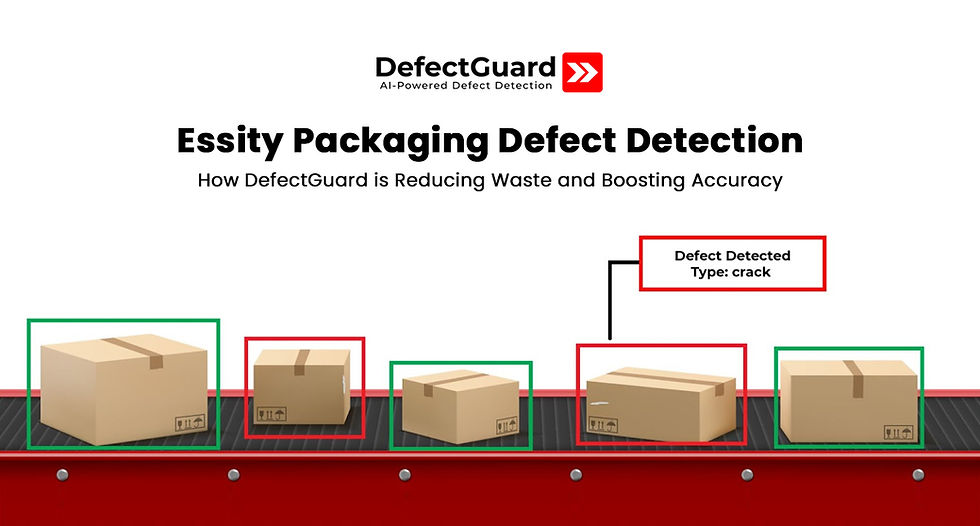Optimizing Furniture Manufacturing with AI-Based Defect Detection
- pyadav52
- Aug 19, 2024
- 3 min read

Introduction
Furniture manufacturing involves complex processes where precision and quality are essential. Defects in furniture products can lead to customer dissatisfaction and increased costs. Artificial Intelligence (AI) is playing a crucial role in enhancing quality control by providing advanced defect detection solutions. Brightpoint AI’s DefectGuard is leading the way in transforming the furniture manufacturing industry by identifying defects early and optimizing production processes.
Key Features
Detailed Inspection AI systems such as Brightpoint AI’s DefectGuard provide detailed inspections of furniture components. AI algorithms analyze each piece for defects like scratches, dents, and alignment issues. This thorough inspection ensures that only high-quality furniture is produced.
Automated Reporting AI generates comprehensive reports on detected defects, including their types and locations. This data helps manufacturers identify recurring issues and implement targeted improvements in their production processes.
Adaptive Learning AI systems continuously learn from past defects, improving their detection capabilities over time. This adaptive learning ensures that AI becomes more accurate and efficient in identifying defects as it processes more data.

Advantages
Enhanced Precision AI provides high precision in defect detection, ensuring that even minor imperfections are identified. This level of accuracy is crucial for maintaining high standards in furniture manufacturing.
Cost Savings By detecting defects early, AI reduces the costs associated with defective products and rework. This leads to significant savings in materials and labor, contributing to overall cost efficiency.
Efficiency Boost AI streamlines the inspection process, reducing the time spent on manual checks. This boost in efficiency allows for faster production cycles and higher throughput, helping manufacturers meet demand more effectively.
Challenges Addressed with Brightpoint AI DefectGuard Solution
Brightpoint AI’s DefectGuard addresses several challenges in furniture manufacturing:
High Defect Rates AI helps in reducing high defect rates by providing accurate and timely defect detection. This ensures that only defect-free products are delivered to customers.
Manual Inspection Costs Manual inspections can be labor-intensive and costly. AI automates the inspection process, reducing the need for manual labor and lowering overall inspection costs.
Production Delays By providing real-time defect detection and reporting, AI minimizes production delays. This ensures a smoother and more efficient production process.

Use Cases
Furniture Assembly AI detects defects in assembled furniture, such as scratches or alignment issues, ensuring that only high-quality products reach the market.
Material Inspection AI inspects raw materials used in furniture production, identifying flaws before they impact the final product.
Please Contact Us for More In-Depth Details
To learn more about how AI can optimize your furniture manufacturing processes, visit Brightpoint AI DefectGuard. Our team is available to provide detailed information and support for integrating AI into your quality control systems.
Register Now for Our Manufacturing Webinar: Insights and Innovations Await!
Join our upcoming Webinar to discover how Microsoft Cloud and AI can enhance Quality Assurance, boost Efficiency, and streamline Operations in Manufacturing. Learn how these technologies can help you reduce defects and optimize your supply chain.
Conclusion
AI-based defect detection is revolutionizing furniture manufacturing by offering enhanced precision, cost savings, and efficiency. By adopting AI technology, manufacturers can ensure high-quality products, streamline operations, and remain competitive in the industry.
FAQ
What types of defects can AI detect in furniture manufacturing? Ans. AI can identify defects such as scratches, dents, and alignment issues in furniture components.
How does AI improve efficiency in furniture manufacturing? Ans. improves efficiency by automating inspections, reducing manual labor, and speeding up the production process.
Can AI be integrated with existing furniture manufacturing systems? Ans. Yes, AI solutions like DefectGuard can be integrated with existing systems, enhancing your current quality control processes.










Comments